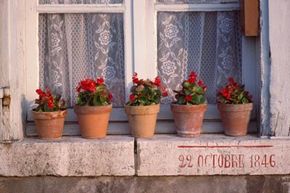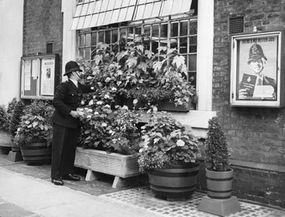At seven in the morning inside your apartment, your alarm clock screams in your face. After waking up sluggishly and getting ready, you head out the door to your car. On the way, a small breeze blows a sweet, earthy fragrance around you -- the trees in the apartment complex are blooming, and their new, colorful presence feels nice for a moment. But there isn't much time to enjoy this fresh growth, because you'll be late for work. Jumping in your car, you speed off to sit in traffic for a little while. Once you get to work, you'll spend a good nine hours inside and hardly leave your desk.
If you feel nature-deprived lately, you're probably not alone. Americans are finding themselves indoors more than ever before -- about 90 percent of our time is spent in homes, offices or stores, and park use is down 25 percent since the late '80s [source: Fitness Magazine]. With all this time inside, we're usually surrounded by four walls and distracted by electronics such as televisions, computers and cell phones.
Advertisement
But humans have a natural love for plants, animals and other living things, and scientists even have a name for this attraction: biophilia. We feel good around nature, and plants and flowers can give us a sense of calm and joy. Some people just have to be outside, and they'll make every effort they can to go to a park or go camping for a weekend.
But what about those of us with hectic work schedules and not enough time to enjoy the outdoors? One step someone with little time or green space around him can take is to partake in container gardening. A very simple practice with lots of possibilities, container gardening allows you to bring nature into your home or office, and it can turn an empty corner or a lonely porch into a beautiful spot. It's also extremely popular -- in 2003 gardeners spent $1 billion dollars on pots and container plants [source: New York Times]. But what exactly is container gardening?
Advertisement


